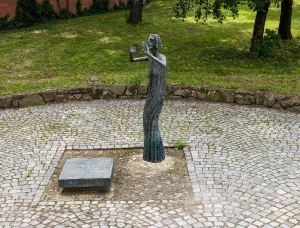Tovačovského Street is the main city avenue connecting the centre with the railway station. It is named after Ctibor Tovačovský of Cimburk (c. 1438–1494). This Moravian nobleman, lawyer, and politician served as the provincial judge of Moravia from 1464 to 1469, was the Moravian provincial governor from 1469 until his death, and between 1471 and 1479 also the highest chancellor of the Kingdom of Bohemia. He also studied in Kroměříž.
Octárna – former Franciscan monastery
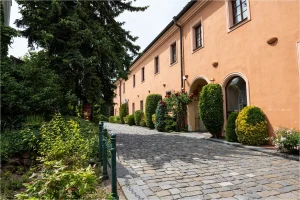
The Franciscan Order was brought to Kroměříž by Cardinal Dietrichstein, who in 1611 had a monastery built for them outside the city walls. It was a fortified complex with a gate, drawbridge, and moats. The monastery was dissolved by the reforms of Joseph II in 1788; the church was demolished, and the buildings were used for economic purposes, for example as a vinegar factory, hence the name “Octárna”. From the monastery complex, the Chapel of the Holy Cross from 1654 has survived. In 1918, the city bought the premises and created flats for socially disadvantaged citizens. Gradually, 45 flats were built here, and unfortunately during this period the greatest damage to the complex occurred. The famous painter Max Švabinský also spent his childhood here. In 1986, the residents moved out, and there were plans to use the building for the district library, but after 1989 the idea was abandoned. In 1992, the city offered the complex for sale. The new owner, the company Elma-therm of Pavel Mráček, began restoring the first houses in Octárna; in 1995, repairs to the chapel were completed; in June 1999, the lunette paintings by Max Švabinský were installed; and from September 2002, a relaxation centre began operating in the area. In December 2002, a restaurant and hotel with a capacity of 45 beds opened.
Jewish Synagogue – House of Culture
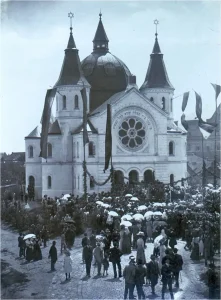
The long and interesting history of the Jewish community in Kroměříž is linked to the existence of three synagogues. The foundation stone of the newest and last synagogue was laid by the leaders of the Jewish Religious Community in December 1908, on the 60th anniversary of Emperor Franz Joseph I’s accession to the throne. The synagogue was initially designed by Felix Skibinský, but the project was eventually awarded to Jakob Gartner, whose Neo-Romanesque façade and Art Nouveau interior design were completed in 1910. After the deportation of the local Jewish community in 1942, the synagogue was plundered and blown up by German soldiers.
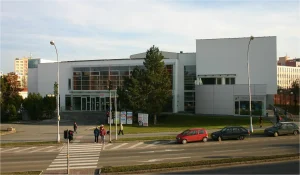
Today, the site is occupied by the House of Culture, completed during the well-known “Action Z” in 1964. The fate of the synagogue and the former Jewish community is commemorated by a monument called *The Mourning Woman* by sculptor Olbram Zoubek. The life-size female figure faces the spot where the synagogue once stood. The monument was unveiled in 1994 in the presence of Israeli Ambassador Moshe Yegar.
Komenského Square, Statue of J. A. Komenský
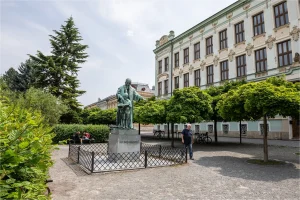
The figure of Jan Amos Komenský needs little introduction. This important Czech writer, humanist, philosopher, theologian, and founder of modern pedagogy gave his name to Kroměříž’s square. At its centre stands Komenský in a larger-than-life bronze statue from 1931 by academic sculptor Josef Axmann. The sculpture group is 2.5 metres high, set on a 1.5-metre pedestal made of Silesian granite.

